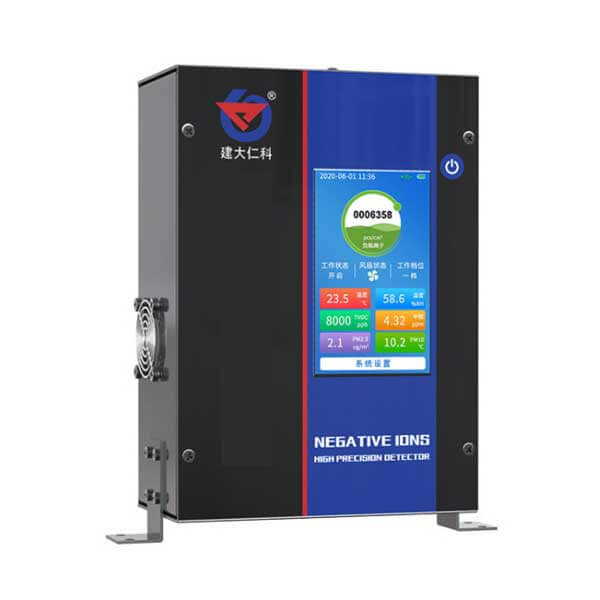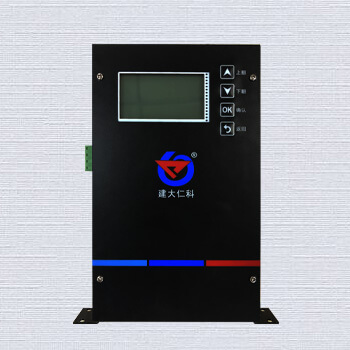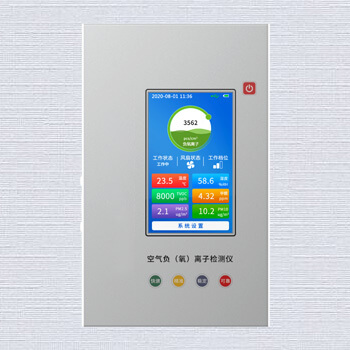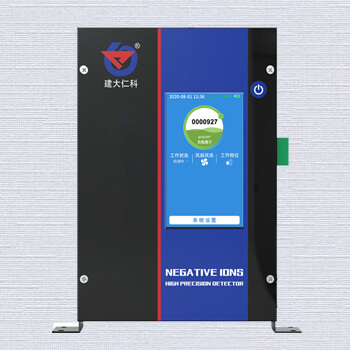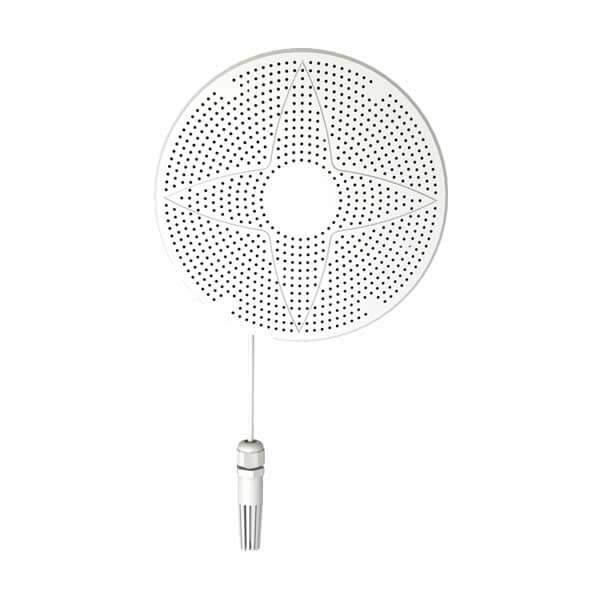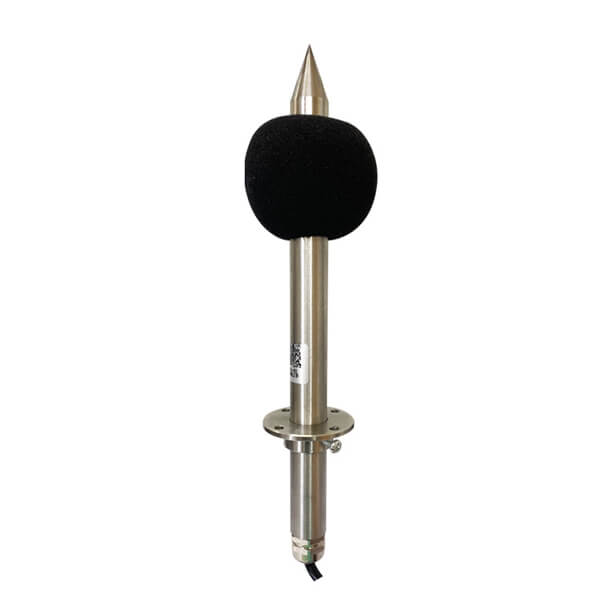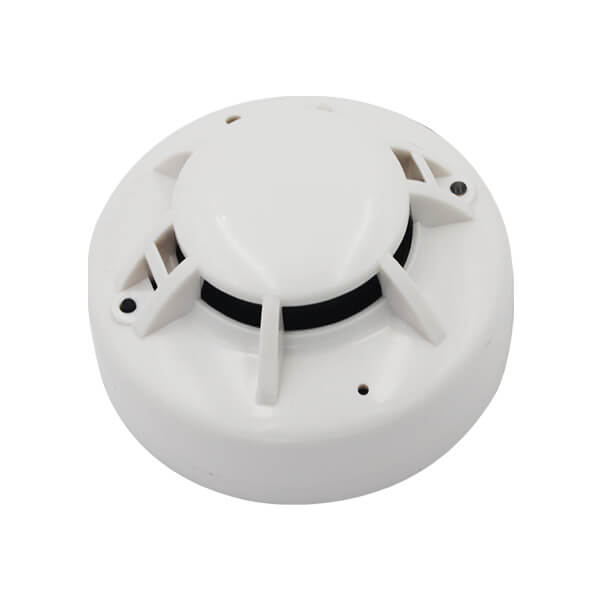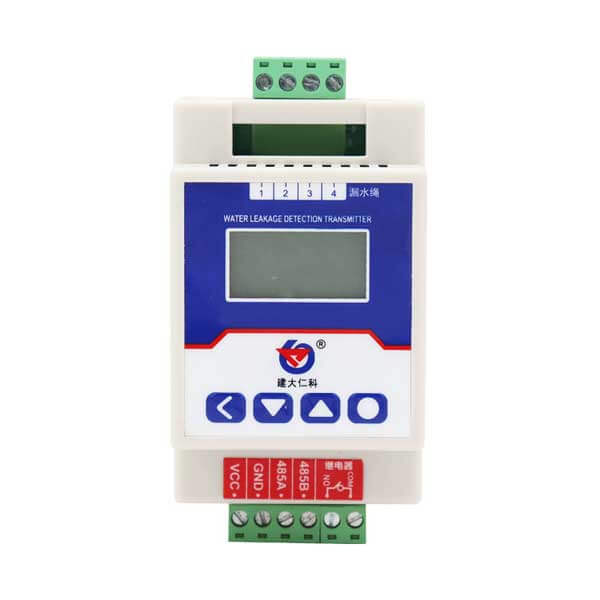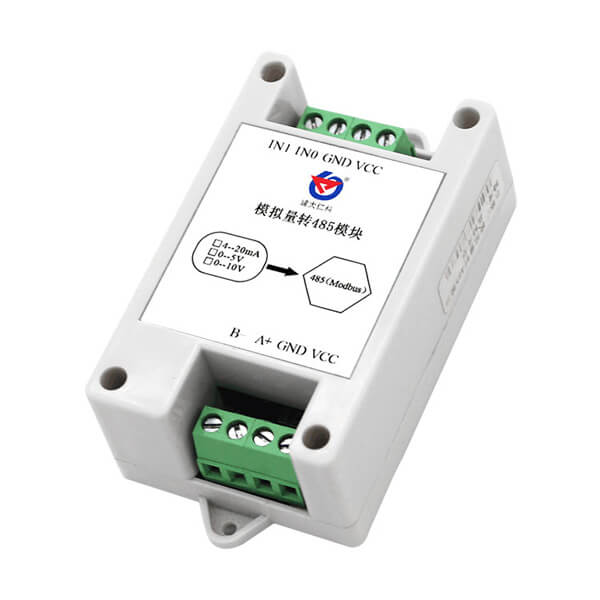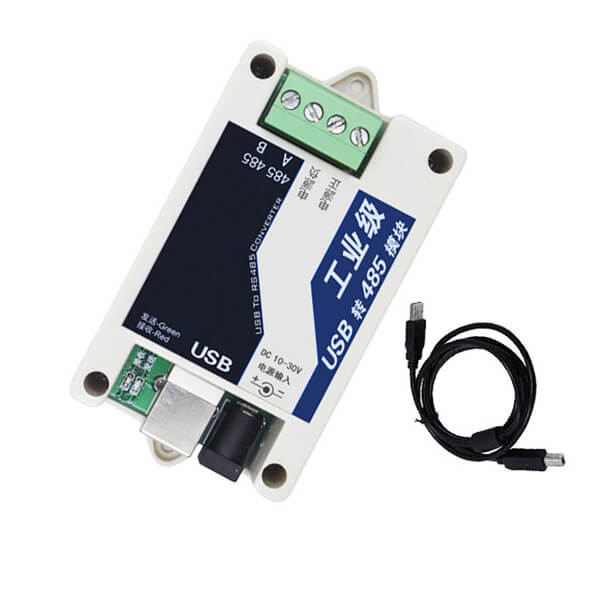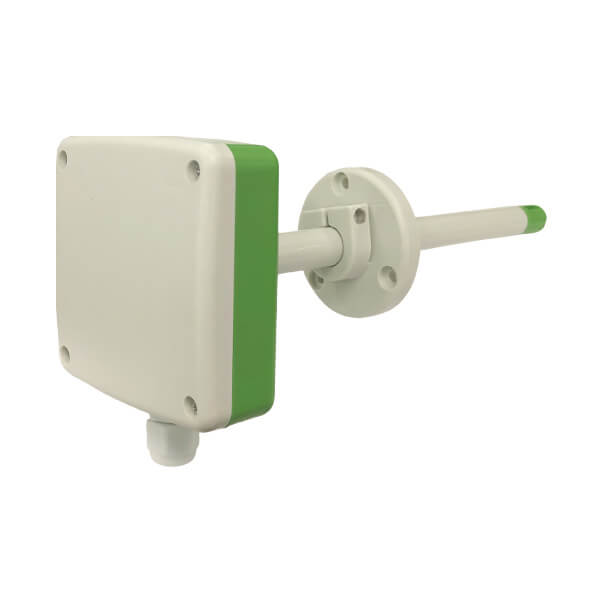Table of Contents What are meteorological sensors? Meteorological sensors are specialized equipment for understanding and measuring climate change. These sensors
Negative Ion Detector
Negative ion detector with color touch screen, real-time display of negative oxygen ion concentration in the air, optional measurement elements such as temperature and humidity, formaldehyde, PM, TVOC, optional select data storage and U disk export function. The equipment adopts standard MODBUS-RTU communication protocol, RS485 signal output, accurate measurement.
- Model: RS-NEGO-N01-2-*-EX
- MOQ: 1 PCS
- Delivery date: within 24 hours
- Price: $209.7~$356.5
Negative Ion Detector Description
This negative ion detector is powered by a rechargeable battery, which is compact and easy to move. Users can carry it to measure the concentration of negative oxygen ions in different locations. With the touch screen function, it is convenient to manually calibrate and modify various parameters at any time. The measurement range is 0-5 million, 0-50 million, 0-100 million, 0-200 million, and 0-500 million for choose. Besides negative oxygen ion detection, measurement elements such as temperature, humidity, formaldehyde, pm2.5, and tvoc can also be added. It can be used for indoor testing or used with a weather station.
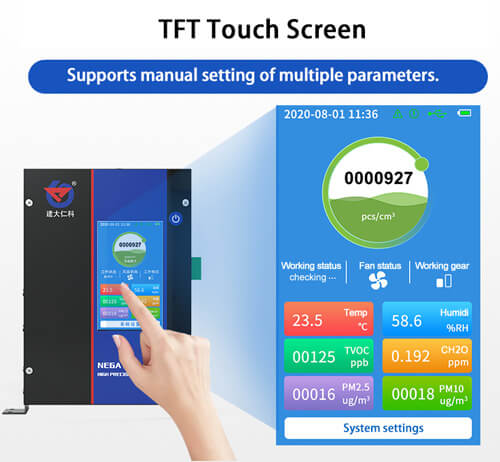
Our Negative Ion Tester Types
Negative Ion Detector Datasheets
| Power supply | DC18-30V | |
| Battery capacity | 4000mAh | |
| Working environment | -20℃~50℃; <95%RH no condensation | |
| Charging time | ≤4h | |
| Negative oxygen ion parameters | Measuring range | 0-5 million pcs/cm3 (Optional 50,000/100,000/500,000/50 million) |
| Minimum resolution | 10pcs/cm3 | |
| Measurement error | ±15% | |
| Data update frequency | 1Hz | |
| Ion mobility | 0.4cm2/(V*S) | |
| Ion mobility error | ±5% | |
| Temperature | Measuring range | -40℃~60℃ |
| Accuracy | ±0.5℃(25℃) | |
| Resolution | ≤0.1℃/y | |
| Humidity | Measuring range | 0%RH-100%RH |
| Accuracy | ±3%RH(60%RH,25℃) | |
| Resolution | ≤1%RH/y | |
| PM10/PM2.5 | Measuring range | 0~1000ug/m3 |
| Accuracy | ±3%FS(@100μg/m3,25℃,50%RH) | |
| Resolution | 1ug/m3 | |
| CH₂O | Measuring range | 0~2ppm |
| Accuracy | ±0.025ppm or ±20%FS | |
| Resolution | 0.001ppm | |
| TVOC | Measuring range | 0~60000ppb |
| Accuracy | 15%FS(@C2H6O,0.5ppm,25℃,50%RH) | |
| Resolution | 1ppb | |
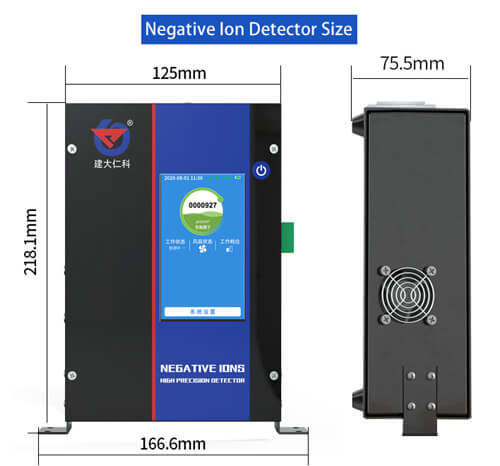
Negative ion detector features
- Color screen display, beautiful and generous.
- Using a high-precision negative oxygen ion measurement unit, long-term stability is good, and the drift is small.
- Built-in battery, which can be externally supplied with a wide voltage range of 18~30V DC.
- The optional storage function can be plugged into U disk to export.
- Optional formaldehyde sensor, PM2.5/10 sensor, temperature and humidity sensor, TVOC sensor.
How to use air ion tester
When the negative ion meter has worked for a long time, we need to perform zero adjustments for calibration. First, click on the system settings on the main interface, click on the “negative oxygen ion settings” on the system menu interface, enter the negative oxygen ion settings interface and click on “equipment zeroing”, enter the zeroing password: 1234321, cover the air inlet with the matching cover and wait for the screen to count down for the 60s After that, the negative ion meter automatically jumps to the main interface, at this time the working status is “Zero adjustments…”, wait for the working status to display “Detection…”, remove the cover of the air inlet, and the zero adjustments is complete.
U disk export data
First insert the USB flash drive into the USB interface, then click System Settings on the main interface, click Data Export on the system menu interface, and display the format of the USB flash drive as the inserted USB flash drive format (support FAT12, FAT16, FAT32), and display the capacity and availability of the USB flash drive Capacity, then click Plan Export, enter the number of data to be exported, click “Start Export”, wait for the prompt “Export Complete”, unplug the U disk to complete the export. The exported data is in EXCEL format.
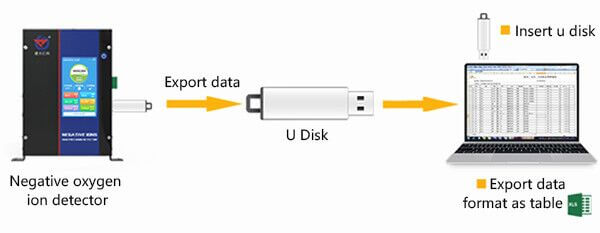
Maintenance of negative ion meter
1. The collector, air inlet and outlet, fan, etc. should be cleaned once a month.
2. At least three months, a special inspection and cleaning, and maintenance of the collector, circuit, and gas circuit should be carried out.
3. Before the lightning-prone season of each year, the lightning protection grounding, the collector shell, and the outer box grounding should be inspected and maintained.
FAQ
More information you may ask
What are negative ions?
Negative oxygen ions are the free electrons generated by the ionization of molecules in the air under the action of high pressure or strong rays, and most of the free electrons are obtained by oxygen. One type of negatively charged oxygen ions (the electrons are negatively charged) that gain some electrons are called “negative oxygen ions“, and the other is the health killer superoxide radical.
Why do we need to detect negative oxygen ions?
The negative oxygen ions in the air have a good effect on the environment and the maintenance of human health. In medicine, negative oxygen ions are known as “vitamins in the air” and “longevity factor”. They can effectively decompose and reduce harmful gases in the air, making people feel refreshed and refreshed, enhancing skin elasticity, relieving aging, preventing health. They can improve respiratory diseases and cardiovascular and cerebrovascular diseases, lower blood pressure, increase appetite, and regulate the body’s physiological functions.
Where is the application of negative oxygen ion detector?
The concentration of negative ions in the air is one of the signs of good air quality. The World Health Organization has also made relevant regulations on the standard concentration of negative ions for clean air. This negative air ion counter can monitor air negative oxygen ions for forestry, environmental protection, meteorology, tourism, etc. It improves the air in rural and urban areas and is of great significance to human society. The high-sensitivity negative air ion counter has a fast response speed and is mainly used to monitor the negative oxygen ion concentration of negative oxygen ion materials, such as negative oxygen ion paint, negative oxygen ion cloth, etc.
What is the unit of concentration of negative ions?
Air negative ion concentration refers to the number of negative ions per unit volume of air, and its unit is pcs/cm3.
What is the working principle of the negative oxygen ion detector?
The overall structure of the negative oxygen ion detector is composed of 3 concentric cylinders. The outer cylinder body and the inner shaft are electrodes. When air passes through the cylinder, the ions hit the cylinder body and the shaft to generate discharge, and the discharge signal is recorded, so that it can be positive in the air. , The number and size of negative ions are measured.
How to obtain the manual of the negative oxygen ion detector?
You can contact us to get the manual by leaving a message or email.
Blogs
The main purpose of environmental monitoring is to provide data on environmental quality and changing trends to ensure the safety
What is a karst cave? The karst cave is a treasure given to mankind by nature and is called a
The weather sensors are the sensing end of the weather station and collect various weather-related data. The weather station can
Table of Contents Smart buildings are the product of the development of modern science. The smart building system is mainly
Table of Contents What is IoT? IoT is the “Internet of things“. It is an extended and expanded network based
What is an air quality monitor? An instrument used to detect air quality can be called an air quality monitor.
A complete set of a weather station is composed of two parts: hardware and software. The hardware part includes various
Table of Contents Do you know where to mount weather station? The weather station should be installed as far as
Compared with the traditional electric plate type air negative ion detector, Renke negative oxygen ion detector designed with the principle
Negative ions are essential for both environmental protection and health. Firstly, from an environmental perspective, the concentration of negative oxygen

